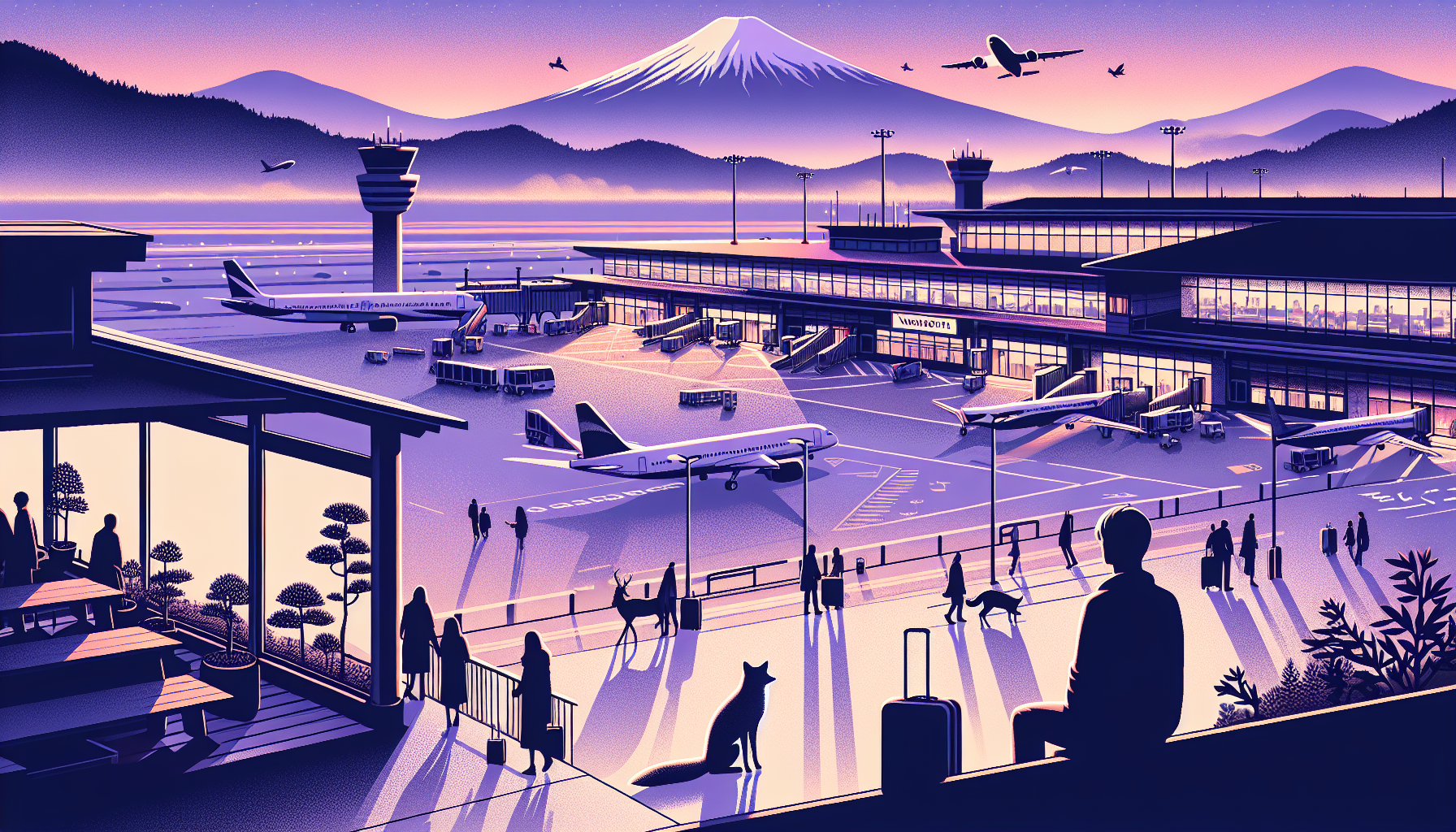Title: Runways and Roaming Bears: What Yamagata's Uninvited Guest Tells Us About Nature, Innovation, and Our Shared Spaces
Dear readers,
Imagine a runway. It’s busy, industrious—a symbol of human achievement in shrinking distances, connecting cultures, enabling dreams to soar from one part of the world to another. Now imagine that scene interrupted by the unlikeliest of intruders—a bear. Where enforced schedules meet the unpredictability of nature, one of Japan’s airports had a wild reminder that sometimes our stories are wonderfully beyond our control.
Welcome to the curious incident at Yamagata Airport.
Beneath the vast skies of northern Japan, amidst the routine of jet engines and polished terminals, a bear made its unexpected entrance. This wasn't a scene from a whimsical animation but an unfolding reality that demanded both attention and action, leaving staff and travelers alike to pause, adapt, and reflect.
A Pause in the World of Precision
On a seemingly regular day, Yamagata Airport found itself in nature’s embrace as a bear ambled onto the runway, causing flights to be canceled and perplexed reactions from both ground workers and passengers. In this disruption, we found more than just a logistics issue—it was a solemn invitation to rethink the spaces we share with the wild.
As Akira Nagai, an airport official, remarked, “Given the situation there is no way we can host plane arrivals now.” His words echoed across media, yet beneath their practical tone lay a powerful truth: our engineered habitats are still vulnerable to nature’s unyielding spontaneity.
The Bear in the Spotlight
Now, you might wonder, why does a bear wandering onto an airport runway resonate so profoundly?
In a world accustomed to celebrity health revelations or geopolitical shifts, a bear disrupting air travel offers an ecosystem of meanings. It’s a rare intersection of nature’s instinct and human planning, a powerful narrative of coexistence right where tarmac meets turf. Bears don’t schedule; they explore. They remind us that despite modernity’s conveniences, we share this planet with bold travelers of a different kind.
This occurrence isn’t isolated. Within Japan, human-bear interactions have spiked, with record encounters causing caution and sometimes tragedy. Scientists point to climate change, which alters available food sources and hibernation patterns, pushing bears into human domains more frequently.
Yet, there lies a question: How do we choose to interpret these occurrences? As intrusions or as opportunities to adapt thoughtfully, recognizing where our paths cross with those of the natural world?
Bridges Over Runways
Consider this: while technology enables us to travel faster and safer, nature still commands respect and reflection. In harnessing the best of innovation, we are often reminded that our pursuit of progress must accommodate the instinctive paths of the world around us.
Initiatives on coexistence are burgeoning worldwide—urban planning now increasingly considers ecological corridors, pathways that ensure animals like our bear traveler can traverse landscapes without disruption.
At Yamagata, hunters have set traps, and police have taken positions not just out of necessity but of the broader understanding that this space must navigate new definitions of safety and serenity.
In the larger tapestry, it’s a learning curve for modern society, one that bears witness to the urgent need for harmony without hubris.
Next Steps in Coexistence
Yamagata bears a question not uncommon across the globe: How do we resolve this stalemate between progress and preservation?
Just as a king’s vulnerability can recalibrate a royal brand, a bear on a runway compels us to redefine our boundaries—spatial, ethical, and environmental. It’s not merely about safeguarding airports but stewarding a commitment to shared spaces where downloads of wildlife weaves and human dreams can evolve side by side.
The stories told by what momentarily halts our hurried lives prove invaluable. They remind us that life’s script is richer when it includes encounters we can’t script or stage. As flights resume their steadfast courses and hunters seek humane reconciliations, let’s not forget the bear’s lesson: Our journeys, no matter how advanced, are at their best when they travel alongside respect and understanding for every trail on this earth.
Until next time—seek harmony, not hegemony.
Yours in contemplation,
A Student of Shared Spaces

